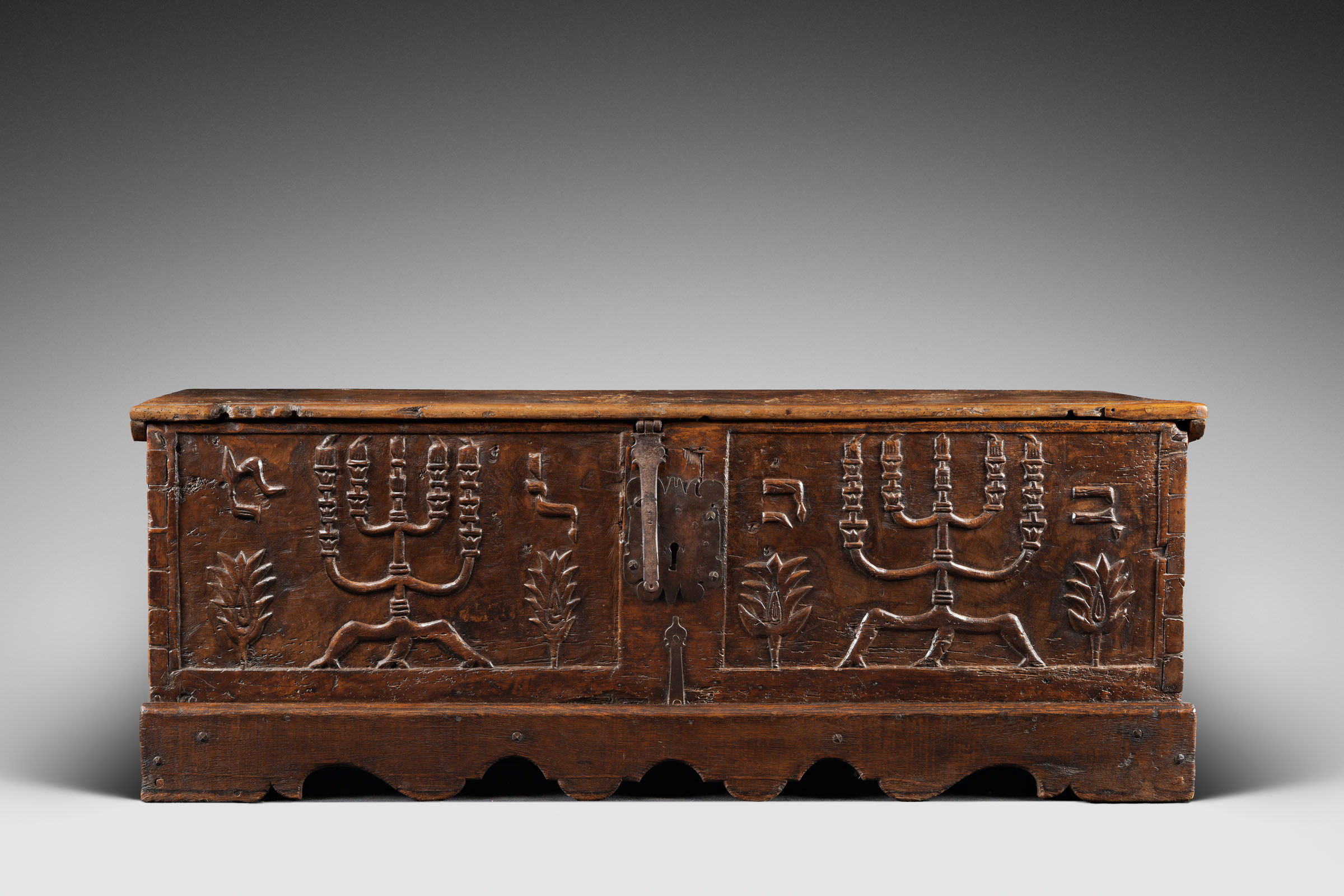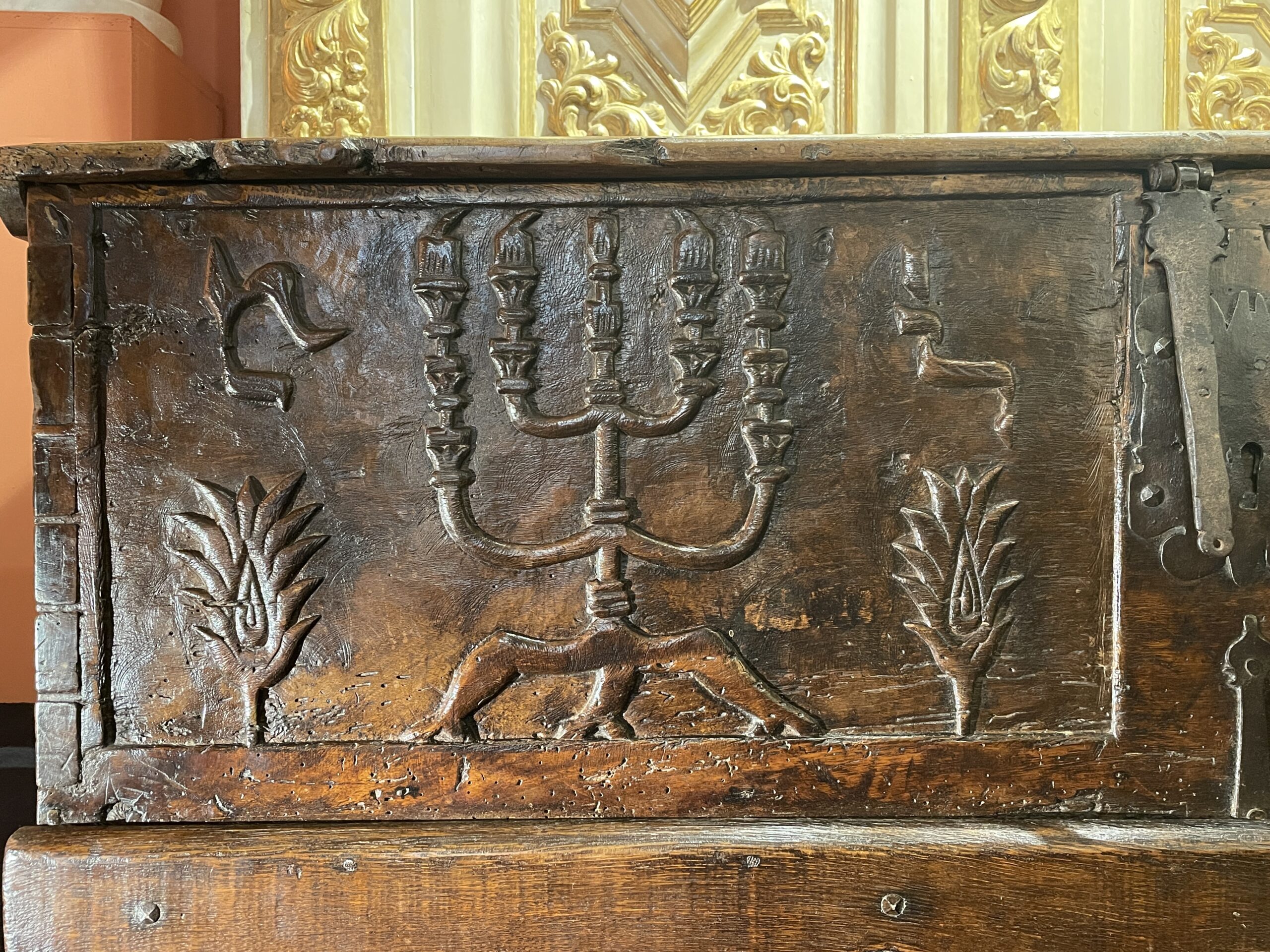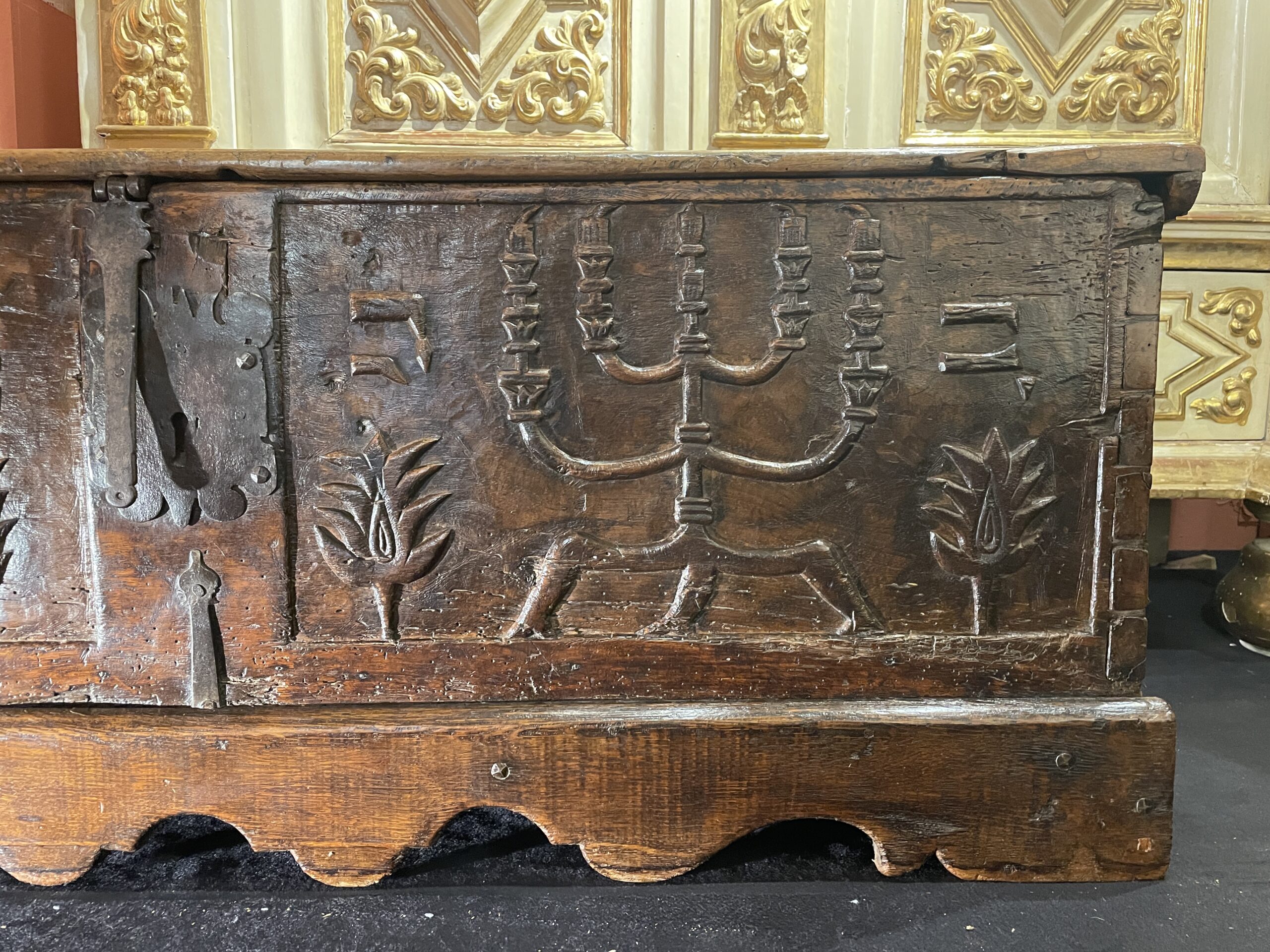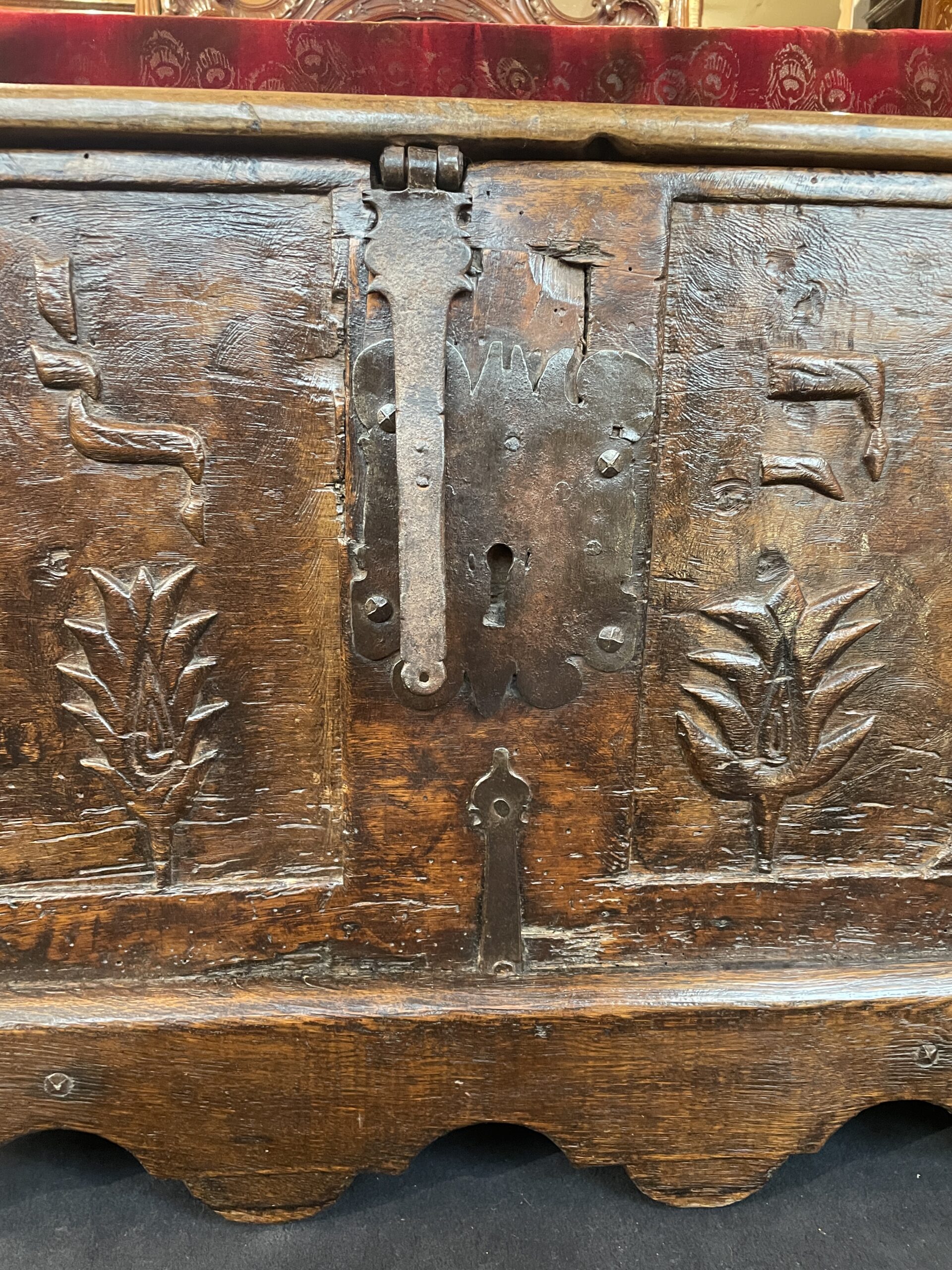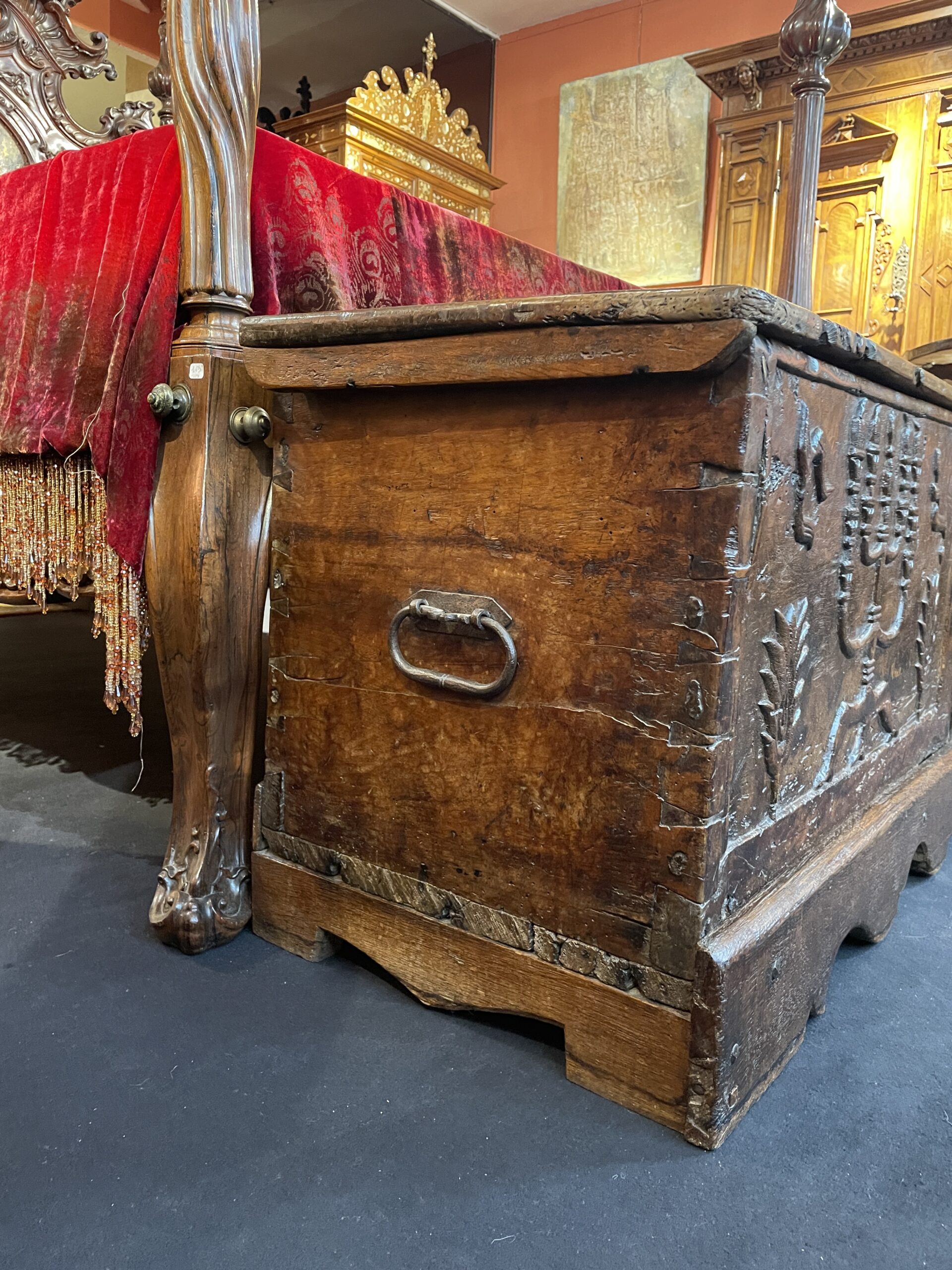Description
This small-sized chest has rather primitive lines. Oblong in shape, it is assembled with dovetail joints and features a hasp lock on the front and handles on the sides. A molded base frames the lower part of the chest.
The front, consist on two carved panels which display the same design. In the center, a five-branched candelabrum, also known as a Menorah, is an important symbol of the Jewish religion. Its origin dates back to antiquity, specifically to the time of the Temple of Jerusalem. According to tradition, the first menorah was designed by Moses himself, following divine instructions. The symbolic significance of the five-branched candelabrum is manifold :
First, it represents light. The light emitted by the menorah symbolizes divine presence and spiritual illumination.
Next, it also symbolizes wisdom. The five branches refer to the five levels of knowledge and spiritual understanding.
Finally, the menorah is a symbol of the continuity and strength of the Jewish people. Even during the darkest periods of history, the light of the menorah continued to shine, representing resilience and hope.
It is flanked by two highly stylized cypress trees, each topped with an initial in ancient Hebrew. On the left, an L and an M (or possibly an H). On the right, a B and a C. Their meaning remains a mystery to this day.
This is most likely a synagogue chest where Shabbat items were stored. Indeed, some people would light four or five candles instead of two for Shabbat. It could have served as a horizontal Holy Ark, contrary to the usual practice of vertical cabinets holding the scrolls of holy texts. The presence of handles indicates that this chest was designed to be moved. However, in synagogues, efforts were made not to move the holy scrolls. This could be justified by the fact that not all European communities had a stable and permanent place of worship until the 19th century.

